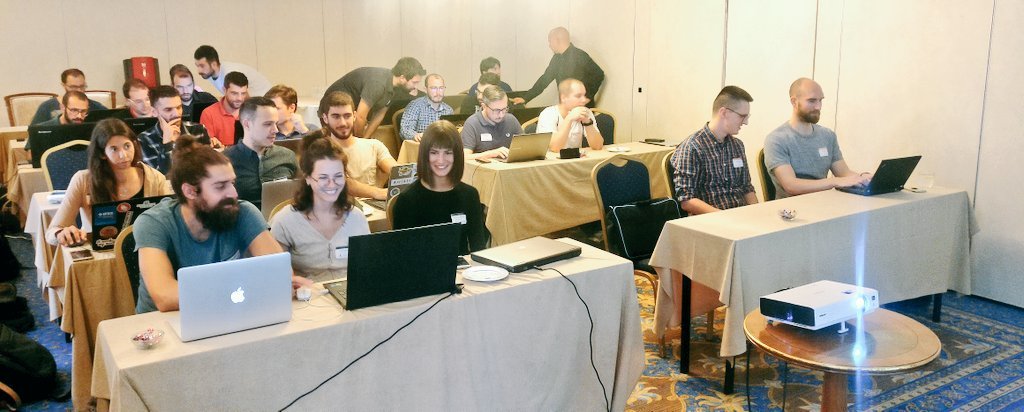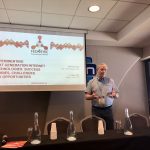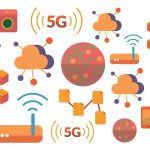The FEC6 student workshop gave the opportunity for students to learn how to design and execute experiments utilizing Fed4FIRE+ facilities and tools. The workshop, attended by 28 students from different universities in Athens, took place on Wednesday 16 October, and was divided into the following sessions:
Introduction to F4F+ testbeds and tools: This experiment showcased the capabilities of the FED4FIRE+ infrastructure through a simple networking setup; the students leased three wireless nodes from the iLab.t testbed, set one of them as a Wireless Access Point, connect the other two on the corresponding WLAN and make them communicate with each other.
Service orchestration over wireless networks using Open Source MANO: In this tutorial, the Open Source MANO framework was used to deploy services in the NITOS testbed. As traditionally NITOS is a wireless testbed, an extended version of the framework allowing the experimenters to specify the wireless networks (WiFi, mmWave and LTE) that were used to interconnect the services that they choose to deploy. The NITOS nodes were used as the compute infrastructure and host the Virtual Network Functions (VNFs). During the tutorial, each experimenter got access over three nodes of the testbed, one used as the controller to deploy VNFs (hosting the Open Source MANO installation and the Virtual Infrastructure Manager) and two compute nodes for hosting the VNFs.
Both these sessions were focused on providing a hands-on experience to the participants.
Most of the students were not familiar with the topic and the tools presented in this tutorial, even though they managed to complete it and achieve the goals that we have defined for this tutorial. The students proved to be highly interested with the tutorial and they asked questions throughout the tutorial asking for extra information about the capabilities of these tools and if they are able to utilize these tools for their semester projects or thesis.
We considered the feedback received from the participants really positive as at the end of the session, all of them were familiar with using the Fed4FIRE+ tools in order to design and execute experiments on their own.






